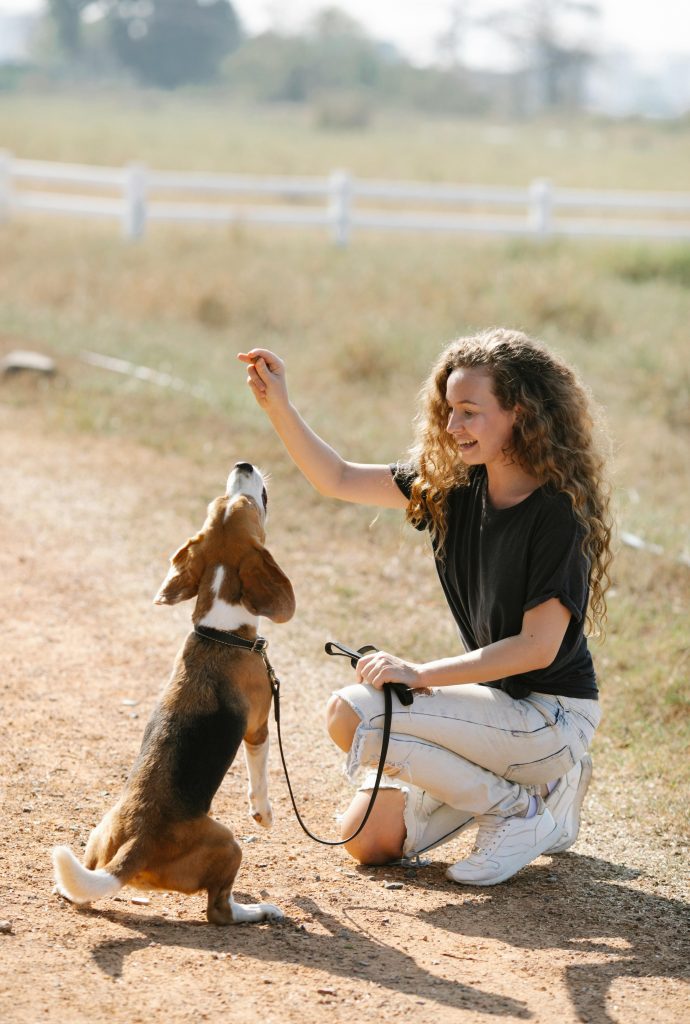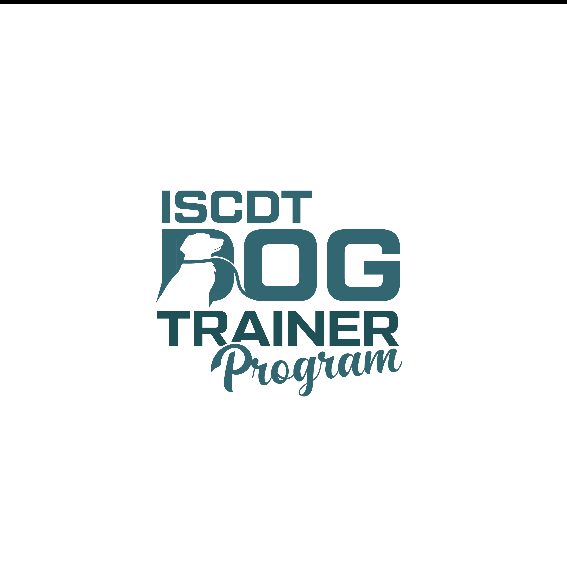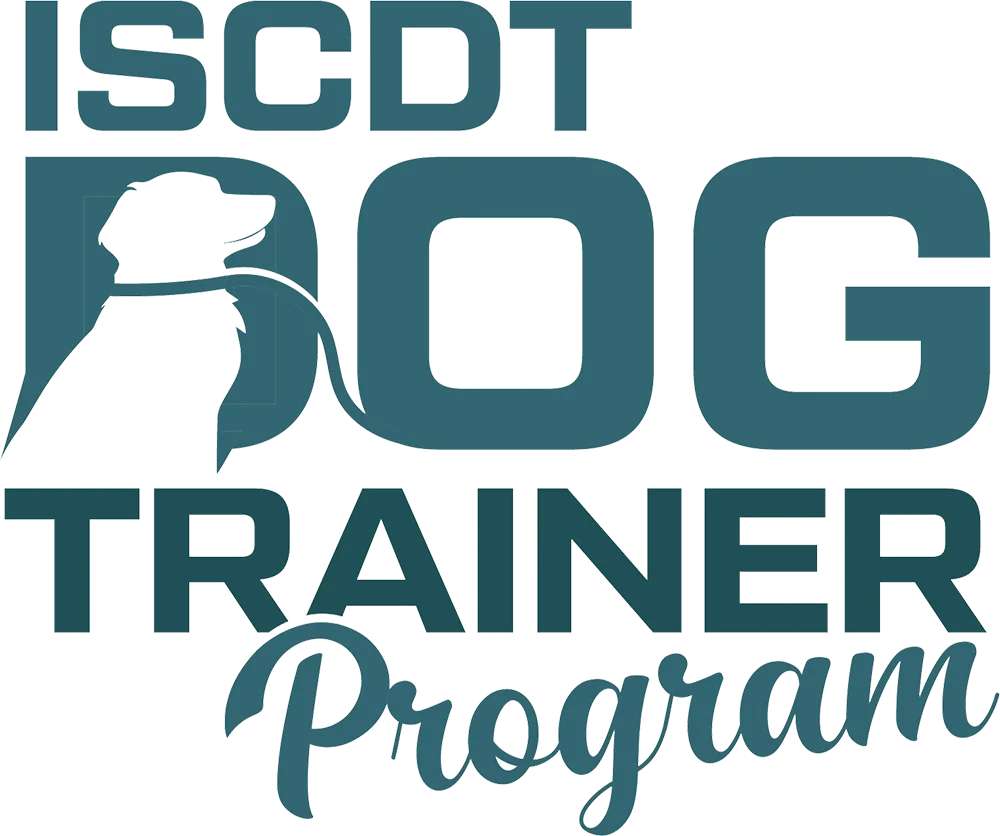Building confidence as a dog trainer is a crucial attribute for success. As a trainer, having confidence in your abilities not only inspires trust in your clients but also allows you to effectively communicate with, and guide, the dogs you work with.

However, building your dog training confidence is an ongoing process that requires practice, patience, and persistence. In this blog post, we’ll explore 10 exercises designed to help you improve your training skills and boost your confidence in working with dogs.
Master Basic Obedience Commands
Start by mastering basic obedience skills with your own dog or a willing volunteer. Practice teaching commands such as sit, stay, come, heel, and down using positive reinforcement techniques. Focus on clear communication, consistency, and patience to reinforce these fundamental skills.
Work with Different Breeds and Personalities
Expose yourself to a variety of dog breeds and personalities to broaden your experience as a trainer. Volunteer at animal shelters, foster dogs and work with your fosters, offer to assist other trainers or offer free dog training lessons to family, neighbors and friends.
Each breed and individual dog presents unique challenges and learning opportunities that will help you develop versatility and adaptability in your training approach.
Practice Handling and Body Language
Practice handling dogs confidently and effectively by paying attention to your body language and movements. Project calmness and assertiveness, use gentle yet firm handling techniques, and maintain a relaxed posture to convey confidence to the dogs you work with.
Learn to read and interpret canine body language to better understand the dog’s response and adjust your approach accordingly.
Set Achievable Goals:
Set achievable training goals for yourself and your canine clients, to build a sense of accomplishment and progress. Start with small, attainable objectives and gradually increase the difficulty as you and the dog gain confidence and proficiency. Celebrate each success along the way, whether it’s mastering a new behavior or overcoming a training challenge.
Many people struggle to set achievable goals. Harvard Business Review wrote a paper on why people struggle to set goals and then provided five tips to help you reach your goals. Click here to read that article.
Record and Review Your Sessions
Record your training sessions on video to review your performance and identify areas for improvement. Pay attention to your communication style, timing of cues and rewards, your body language and ability to keep your arms and body relaxed. So many dog owners and new trainers have tight, stiff arms while training. This causes pressure on the leash, thereby sending the wrong message to the dog.
Watch those videos and reflect on what worked well and what could be enhanced. Use this feedback to refine your training techniques.
Seek Feedback and Mentorship
Seek feedback from experienced trainers, mentors, or peers to gain valuable insights and perspectives on your training skills.
Ask for constructive criticism, advice, and tips for improvement. Be open to receiving feedback with humility and gratitude. Learning from others who have more experience can help you identify blind spots and accelerate your growth as a trainer.
Focus on Positive Reinforcement
Embrace positive reinforcement and shaping behaviors. Focus on rewarding desired behaviors with treats, praise or play. Positive reinforcement builds a strong foundation of trust and cooperation between you and the dogs you train, enhancing your confidence as a trainer.
Simulate Real-Life Scenarios
Simulate real-life scenarios and environments during training sessions to prepare yourself for various situations you may encounter as a dog trainer.
Practice obedience commands in different locations, around different levels of distraction and various contexts to help dogs generalize their skills and respond reliably in any situation. The more you expose yourself and client dogs to different scenarios, the more confident and prepared you’ll feel as a trainer.
Learn what it means to generalize commands and how to achieve this. Click here to read how to get your dogs to follow commands around distractions.
Visualize Success
Visualize success in your training sessions by mentally rehearsing your techniques and desired outcomes. View yourself confidently and effectively guiding the dog through the training exercises, achieving your goals, and celebrating success. Positive visualization can help build confidence, reduce anxiety, and enhance performance during actual training sessions.
Practice your script for teaching dog owners how to teach their dog. It is often easier to train the dog than to teach the owner. Remember, your job is to teach the owner how to train their own dog.
Celebrate Your Progress
Finally, celebrate your progress and successes as you continue to develop your dog training confidence and skill. Acknowledge and appreciate the improvements you’ve made, no matter how small, and recognize the effort and dedication you’ve invested in your growth as a trainer. Celebrating your progress reinforces your confidence and motivation to continue learning and evolving in your practice.
Alternatively, avoid comparing yourself to trainers you meet or watch online. We are all at different stages of our career. Those trainers were once in your shoes. If you agree with their techniques, seek guidance from them, follow their pages and watch their videos. Be careful how many trainers you follow. Following too many dog trainers, can lead to stress.
Don’t feel celebrating your wins is that important? This article from Harvard Business Review may have you thinking differently.
In Closing
Building confidence as a dog trainer is a gradual process that requires dedication, practice, and a willingness to step outside your comfort zone. By engaging in these 10 exercises, you can strengthen your confidence, competence, and effectiveness as a trainer. Remember that confidence is not about being perfect but about being willing to learn, adapt, and grow in your journey as a dog trainer. With patience, persistence and a positive mindset, you can become a confident and successful trainer who makes a positive impact in the lives of dogs and their owners.

ISCDT – Dog Trainer Program provides an affordable program with a huge impact. Our 18-lesson course is designed to take dog training from a hobby to a career. Your ISCDT mentor is always willing to answer your questions, provide tips and suggestions. ISCDT – Dog Trainer Program will also guide you out of your comfort zone and have you experiencing different aspects of training. Why? Because we monitor your capabilities and we have confidence in your skill. Visit ISCDT.com to join hundreds of graduates from ISCDT’s online or in-person programs.
